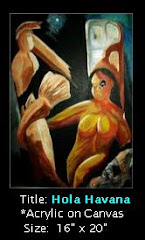Commercial television in the United States was paid for by . . . what else? . . . commercials. While the bane of viewer’s existence when they first aired, looking back, commercials of the 1950s and 1960s today have a certain simplistic, and nostalgic, appeal.
And in their defense, during the late 1950s and early 1960s, we saw far fewer commercial minutes per hour than we see today.
Roughly half as many.
In fact, many of the old classic TV shows from the early 1970s were `whittled' down’ to make room for more commercials when they re-aired in the 1980s and 1990s.
A little more than a year ago I highlighted about 30 minutes worth of classic commercials in a blog entitled And Now A Word From Our Sponsor, followed a few months later by another selection of early TV advertisements in And Now, Another Word From Our Sponsor . . .
Today we take another look at early TV commercials with three examples from the Prelinger Archives on The Internet Archive.
First a 25 minute compilation of ads, most of which I remember well from my childhood. Mostly from the 1960s, but a few are older. The fashions, hairstyles, and music reflect the era in which they were made.
First the link, then a few notes about some of the ads.
Television Commercials (1950s-1960s) - Various
The corny cornflakes ad that starts this round off capitalizes on the `folk music’ mania of the 1960s, with a jingle that `borrows’ heavily from Woody Guthrie’s This Land is Your Land.
The jingle for the Alka-Seltzer ad that follows (No Matter What Shape, by the T-Bones) hit #3 on the pop charts in 1965! Six years later, Coke would snag pop-music gold with I’d Like To Teach The World to Sing, which went to #1 in the UK and #7 in the U.S. in 1971.
Speaking of music, the music playing in the back of the Colt .45 commercials is Solfeggio, famously used by Ernie Kovacs in his classic Nairobi Trio skit.
The Nairobi Trio
And of course, the Noxzema Shaving cream commercials used a former #1 hit, David Rose’s The Stripper, as background while Swedish Model Gunilla Knutson urged men to `Take it off . . .take it all off . . .” between the years 1966 and 1973.
Sharp-eyed viewers will recognize Charlotte Rae being interviewed in the shower in the last commercial for oil heat. Unlike a lot of `famous’ personalities you see in older commercials, Charlotte was already well established both on Broadway and on TV when she did this 1964 bit.
While most today remember her as housemother Edna Garrett in the 80s sitcom, The Facts of Life, those of an older generation remember her as Sylvia Schnauser on Car 54 Where Are You? along with dozens of other TV roles.
Classic Television Commercials (Part IV) - Various
Many of the early `live’ TV shows of the 1950s worked commercials into the body of the show, with the `stars’ doing the pitchman’s job. The Fibber McGee and Molly radio show raised this ploy to a near-art-form and managed to work in a mid-episode reference to Johnson’s Wax in every show.
This next group of commercials starts out with a long, but funny example from the old Gary Moore Show. That’s sidekick Durwood Kirby as the Viking, and Gary comes in in pigtails at the end.
I’ve not identified the actress in the skit, although on poster on the Internet Archive believes it to be Denise Lor.
The Maxwell House commercial has radio and TV announcer, and sometimes actor, Rex Marshall (Suspense 1949-1953) and (Ellery Queen 1950-1951) extolling the virtues of instant coffee `flavor buds’.
This collection ends with three classic (and clever) beer commercials; Hamms, Black Label, and Rheingold.
Classic Television Commercials (Part V) – Various
Our last stop today starts out with a couple of beer commercials, first for Budweiser and then an elaborate stop-action marionette commercial for Ballantine Ale.
The Arthur Godfrey bit is long, but illustrative of the work of one of the great pitchmen of the 1950s. Poking gentle fun at the sponsors (but not the products!), Godfrey’s homespun narratives sold more soup and tea than the sponsor could ever have hoped.
Godfrey was, during the 1950s, on the radio and TV more hours a week (he had 2 weekly shows, and a daily 90-minute morning show at one point) than anyone else in the country. For a more complete rundown on Arthur Godfrey’s Career, you might wish to explore My Man (Arthur) Godfrey.
The last two commercials go together like . . . well, like Ritz crackers and peanut butter.
Hopefully some of these advertisements will have brought back a memory or two, and perhaps a smile as you remember a simpler time.
One when commercials only took up about 8 minutes of every hour of broadcast time, instead of 16.










No comments:
Post a Comment